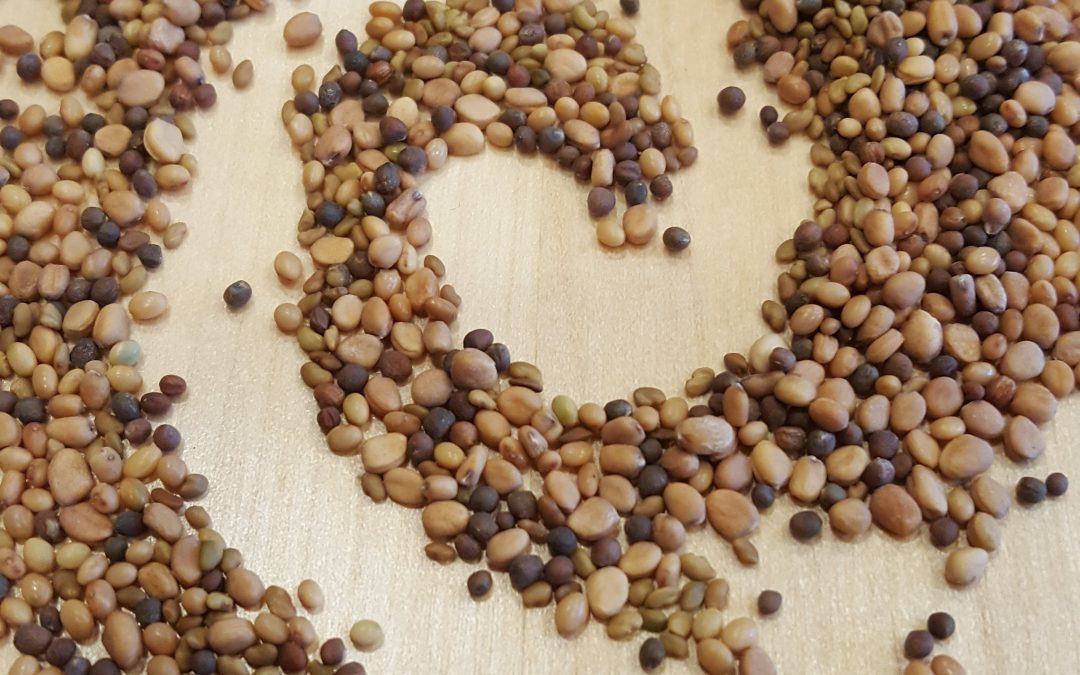If you have been gardening for a while and have an inventory of stored seeds, early Spring is the time to start checking the seed viability. If you are new to gardening, do not throw away the extra seeds in the packet. Begin your seed inventory by properly storing them in a cool, dry place for up to six years.
Seed Storing Tips:
- Keep them dry- If harvesting your own seeds make sure they are dry before you stow them away. If they have the least bit of moisture, they can mold making them unviable. Feed them to the birds.
- Pack and label- If you have the packet, they came in, put a date on them before storing. If they are loose seeds, make sure to place them in an envelope and label with as much information with a minimum of the plant name and date. When storing your seeds for long periods of time they can often get mixed up. Unless you are meticulous about keeping dates, ensuring appropriate temperatures year-round then checking your seed viability is essential.
- Keep it airtight- Place in an airtight container such as a plastic bag, glass jar or repurpose a plastic bin. Keeping out the humidity and rodents is critical. Take extra precautions if you live in a humid environment by using use milk powder or silica gel to absorb any dampness.
- Darkness is best- Store seeds in a cold, dark, and dry location. Many folks store seeds in a fridge or freezer to increase the lifespan but make sure when removed allow the seeds to come to room temperature to avoid condensation.
Seed quality is dependent on how you store them. In place of building an extensive library for reference, or having to search for each seed instruction you can simply test the viability of your seeds.
Seed Life Expectancy
The life of vegetable seeds vary. Seed life is always an approximation and is due to environmental variables and uncontrollable factors such as genes. Generally, if you store seeds in a cool, dark, and dry location, they’ll keep for years. Some exceptions are potatoes, parsnips, onions, parsley, or vegetables that harbor disease. On average seeds last about two years like peppers and corn, some can last up to three years beans, broccoli, carrots, cucumbers, spinach. Some can go four or more years such as cold-hardy plants like cabbage, charred, squash, and turnips.
Before you spend hours planting hundreds of seeds checking the viability will save you some sanity. Testing the viability is simple. First, grab ten seeds at random and place them on a damp cloth or paper towel. Put them in an airtight container such as a plastic bag or Tupperware and place them in a warm spot. In 7 to 10 days check the seeds to see how many have started germination. When only half the seeds sprout, it’s time to buy new seeds. If seven or more have sprouted, go ahead and sow them with at least three seeds per hole to prevent duds.
If you have ordered seeds in the past from a company in early Spring, you will receive their catalogs. There are plenty of companies to order seeds, look for a company that sells seeds for your region, hardiness zone, or microclimate. Another option is to visit your local gardening center, university extension, or Nursery. By visiting your local Nursery, you can also ask for advice and see what you’re buying before you purchase it.
Happy sowing! What will you plant this year?
~Janine


